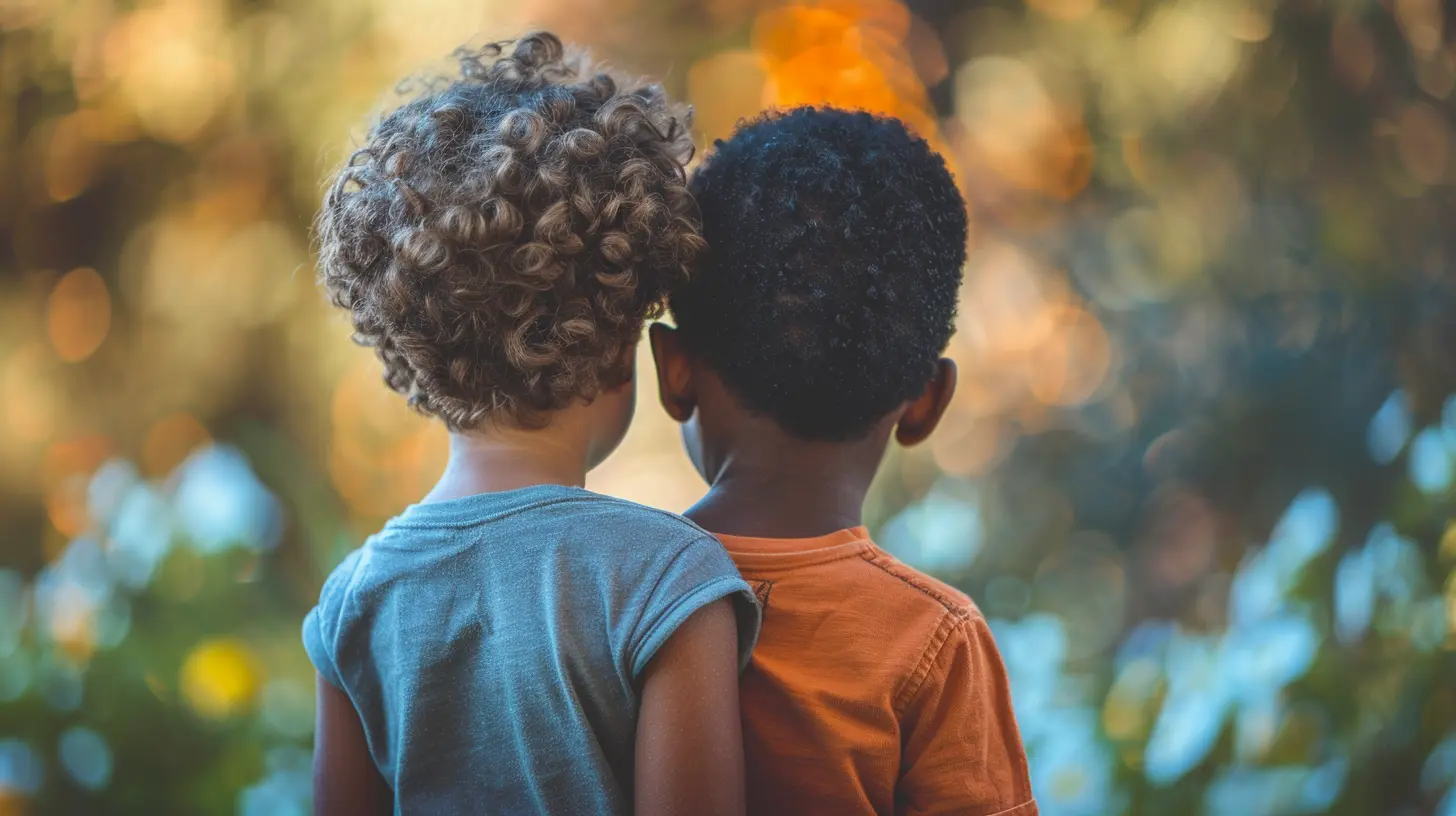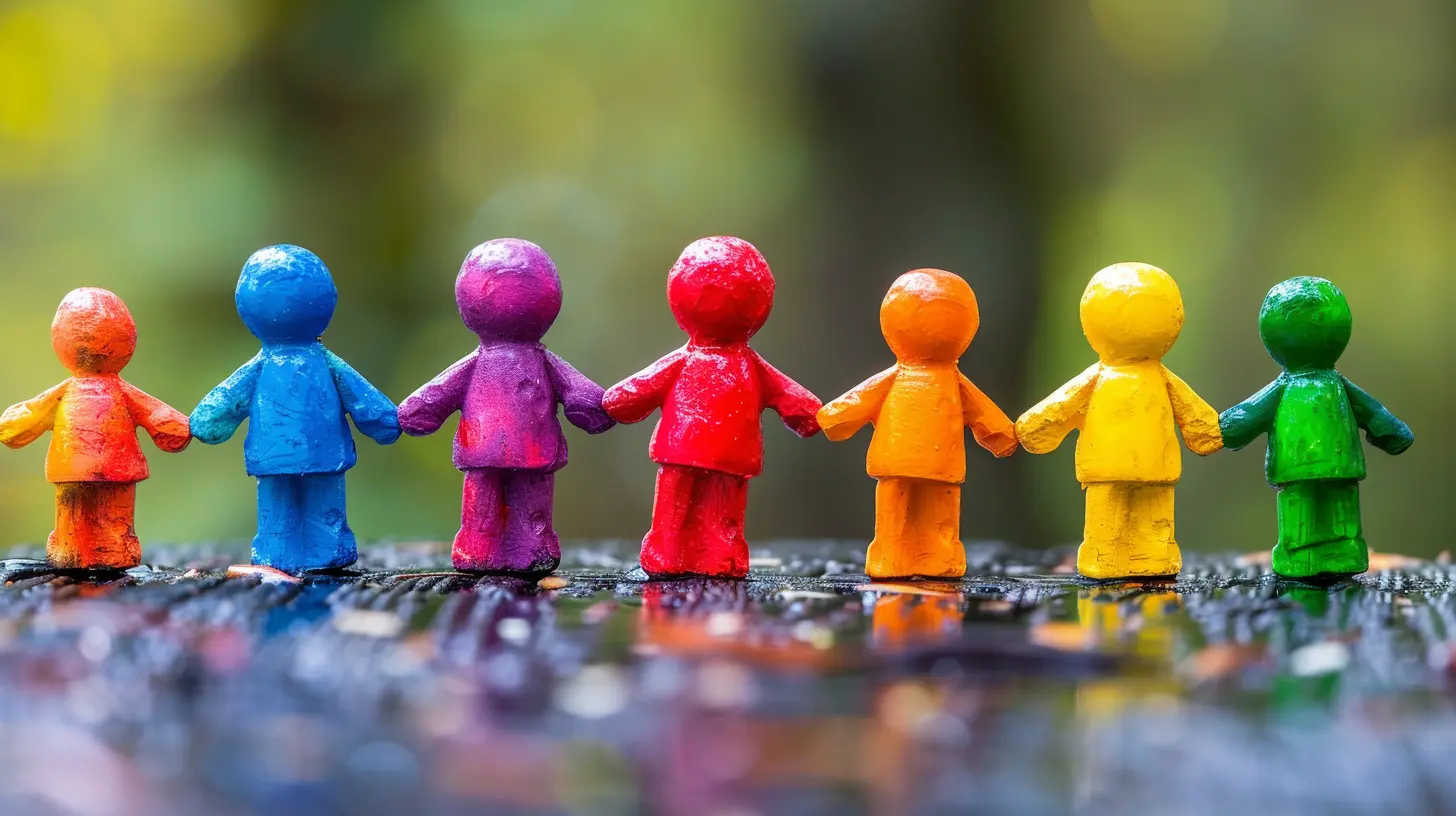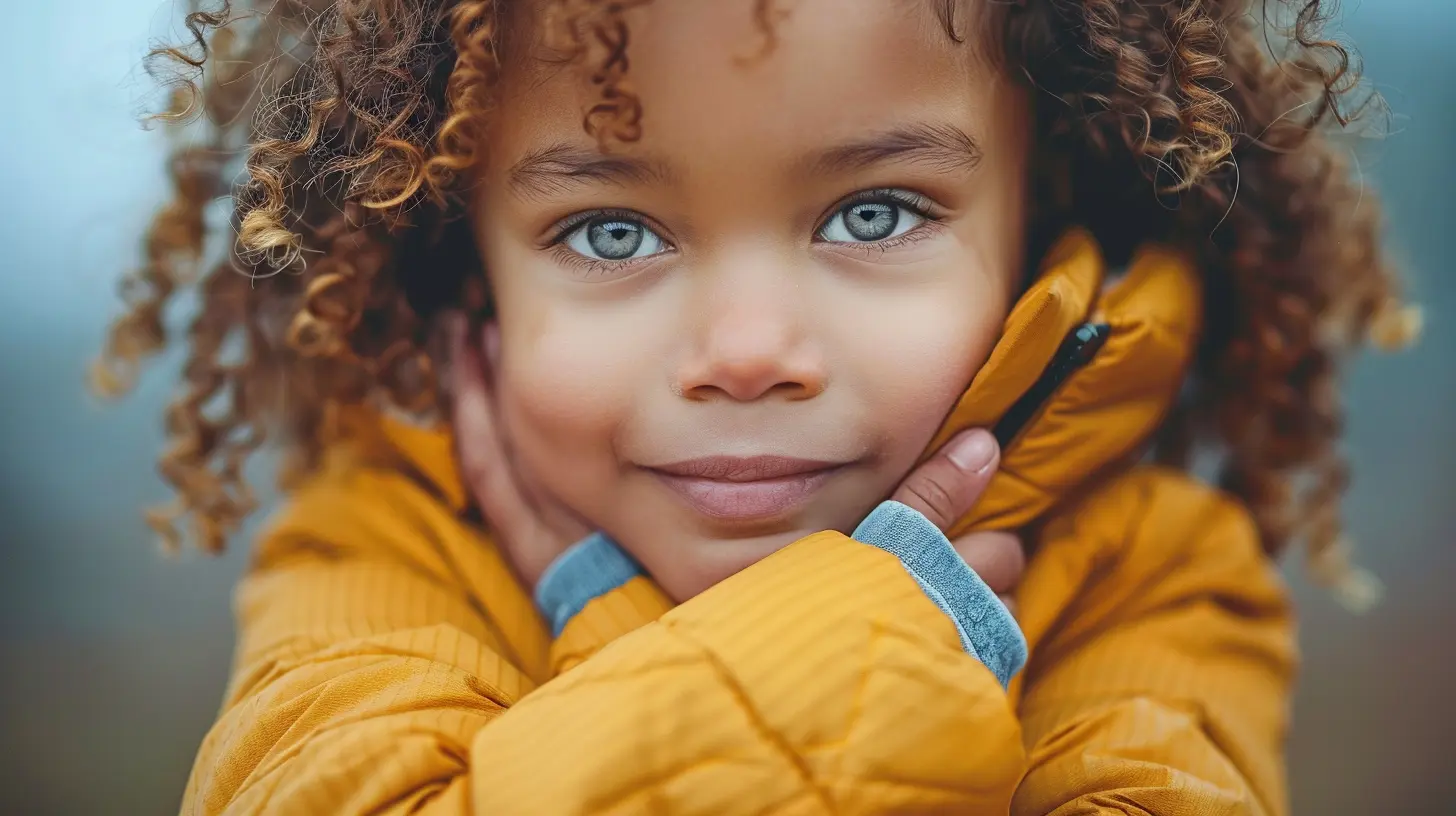Embracing Differences: How to Teach Kids the Empathy of Inclusion
28 July 2025
Have you ever watched a group of kids on a playground and noticed how naturally they gravitate toward those who are just like them? It's not about being mean or exclusive—they're just comfortable with what they know. And let's be honest, aren't we all a little like that?
But here's the thing: the world isn't made up of only people just like us. It’s filled with folks from all walks of life—different backgrounds, abilities, cultures, languages, and more. And you know what makes us awesome as humans? When we can see those differences, respect them, and include everyone anyway. That’s what inclusion is all about.
So, how do we raise kids who don’t just tolerate diversity but actually celebrate it? How do we teach them empathy, that deep-rooted understanding of what someone else might be going through?
Welcome to this heart-to-heart guide. We’re diving deep into how to help our little ones grow into compassionate, inclusive humans—because the world really needs more of them.
Why Inclusion and Empathy Matter (More Than Ever)
In today's world, our kids are more connected than ever. They can chat with kids across the globe, learn about other cultures at the click of a button, and attend schools that are more diverse than a few decades ago. But does proximity guarantee understanding? Sadly, no.That’s where empathy steps in. Empathy isn't just feeling sorry for someone; it's feeling with them. It’s recognizing another person’s experience and saying, “I see you. I hear you. I’m with you.”
Inclusion, on the other hand, is empathy in action. It’s making sure everyone feels like they belong, just as they are. And when we raise kids to think and act this way? We’re not just shaping good humans—we’re literally building a better future for everyone.
Start With You: Modeling Matters
Before we can teach our kids anything, we need to check in with ourselves. Kids don’t always listen to what we say, but they’re watching what we do. (Scary, right?)- Do we make inclusive choices in our friendships and conversations?
- Are we open to learning about people who are different from us?
- Do we challenge stereotypes, even in casual jokes or media?
If your child hears you speak kindly about others, sees you standing up for what’s right, or notices you taking time to understand someone’s experience—they’re soaking it all in. Remember, you’re their first teacher.
Talk Early, Talk Often
Conversations about inclusion don’t have to be heavy or complicated. In fact, we should start having them when kids are little. The earlier they develop an empathy muscle, the stronger it gets.Here’s how to ease into it:
- Point it out: When watching a show or reading a book, ask, “Why do you think that character was left out?” or “How would you feel if that happened to you?”
- Use real examples: If your child sees someone using a wheelchair or speaking a different language, don’t shush their curiosity. That’s a perfect moment to teach respect and curiosity in tandem.
- Share diverse stories: Fill your home with books, shows, and toys that reflect a wide variety of cultures, families, and abilities. Representation matters, even in the toy box.
Kids are naturally curious and compassionate. It's our job to nurture that.
Create Opportunities for Interaction
Let’s face it, if your child never interacts with anyone different from them, it’s hard to develop empathy for those people. We’re all more empathetic when we know someone personally who’s had a different experience.So how do you create those opportunities?
- Join community events: Festivals, cultural fairs, community service projects—anything that brings people together.
- Pick inclusive activities: Encourage your child to join diverse playgroups, clubs, or sports teams.
- Make friendships intentional: Don’t force it, but open up chances to hang out with kids who live differently, come from other cultures, or have unique needs.
Just like trying a new food, sometimes it takes a few bites before we truly appreciate something—or someone—different.
Celebrate Differences Without Centering Them
Okay, this one’s important. We want to recognize differences without making them “other.” Sometimes, in an effort to highlight diversity, we can unintentionally make it seem like a novelty or spectacle.Instead, normalize it.
- “Some people speak English, and some speak Spanish. Cool, right?”
- “Your friend uses hearing aids to help him hear, just like glasses help you see better.”
- “She wears a hijab because it’s part of her religion, just like you wear your necklace because it’s special to you.”
The goal? Make diversity a regular part of their everyday world—not a once-a-year lesson during a “culture day.”
Teach the Power of Words
Words are powerful. One thoughtless comment can leave a lasting scar, especially on a child. That’s why it’s critical to teach our kids respectful language early on.- Avoid labels or stereotypes, and correct them gently when they pop up.
- Teach kind alternatives: Instead of saying, “That’s weird,” say, “That’s different from what I know!”
- Encourage questions: Kids will ask things like, “Why does he talk like that?” That’s okay! A simple answer like “Everyone communicates differently” goes a long way.
And most of all? Teach them to listen. Sometimes, the most inclusive thing your child can do is simply hear someone else’s story without interrupting, judging, or changing the subject.
Reflect on Biases and Stereotypes
We don’t like to think we’re biased—but we all are, in one way or another. It’s how our brains process information quickly. But unchecked biases can morph into unfair behavior or attitudes.Help your child recognize and question stereotypes:
- “Why do you think boys are always the superheroes in movies?”
- “Is it fair to say someone who wears glasses is a nerd?”
- “We just saw two moms dropping off their kid—families can look different, can’t they?”
By gently nudging your child to think critically, you’re helping them develop a lens that sees beyond the surface.
Encourage Acts of Inclusion
Empathy is good in theory, but it shines brightest in action. Talk to your kids about how they can be includers in real-life situations.Try saying:
- “Is there anyone sitting alone at lunch? Maybe you could invite them to your table.”
- “Your classmate has trouble reading out loud. Can you partner with them in a way that supports them kindly?”
- “Someone just moved here and doesn’t speak much English. What could you do to make them feel welcome?”
When kindness becomes a habit, inclusion follows naturally.
Embrace Mistakes and Keep the Conversation Going
No child (or adult) is going to get this perfect every time. Your child will say the wrong thing or exclude someone without realizing it. Don’t panic—it’s a learning opportunity.Instead of scolding, ask:
- “Why do you think that might have hurt their feelings?”
- “How would you feel if someone said that to you?”
- “What could we do differently next time?”
Let them know it’s okay to make mistakes—as long as they’re willing to listen, reflect, and do better next time. That’s how empathy grows.
Inclusion at Home: It Starts Within Your Walls
Here’s a powerful truth: If your home feels like a safe, inclusive space, your child is more likely to create that environment elsewhere. So take a look inward:- Do all family members’ voices matter equally?
- Is everyone allowed to express their feelings openly?
- Do you talk about justice, fairness, and standing up for others?
Remember, the dinner table can be one of the most powerful classrooms in the world.
Your Role Is Bigger Than You Think
You’re not just raising a kid. You’re shaping a future teacher, friend, teammate, neighbor, leader—maybe even a changemaker. The ripple effects of your parenting go far and wide.So take heart. Yes, these conversations can be tricky and emotional. But they’re also beautiful and powerful. And you are more than capable of guiding your child through them.
Just picture it: a world where kids accept each other exactly as they are. No masks, no categories, no cliques—just connection. That’s the kind of legacy we all want to leave behind, right?
And it all starts with you and your child, having one honest conversation at a time.
Final Thoughts
Embracing differences isn’t about ignoring them—it’s about seeing them, honoring them, and choosing inclusion anyway. When our kids understand that, and when they feel it in their bones, they won’t just “accept” others—they’ll stand beside them, stick up for them, and genuinely celebrate what makes them unique.Raise kind humans. The world could use more of them.
all images in this post were generated using AI tools
Category:
Teaching EmpathyAuthor:

Tara Henson
Discussion
rate this article
1 comments
Aiden McMichael
This article offers essential insights on fostering empathy in children. Teaching them to embrace differences is crucial for nurturing a more inclusive mindset. Practical tips and relatable examples make it a valuable read!
August 11, 2025 at 3:24 PM

Tara Henson
Thank you for your kind words! I'm glad you found the insights and tips helpful for fostering empathy in children.


